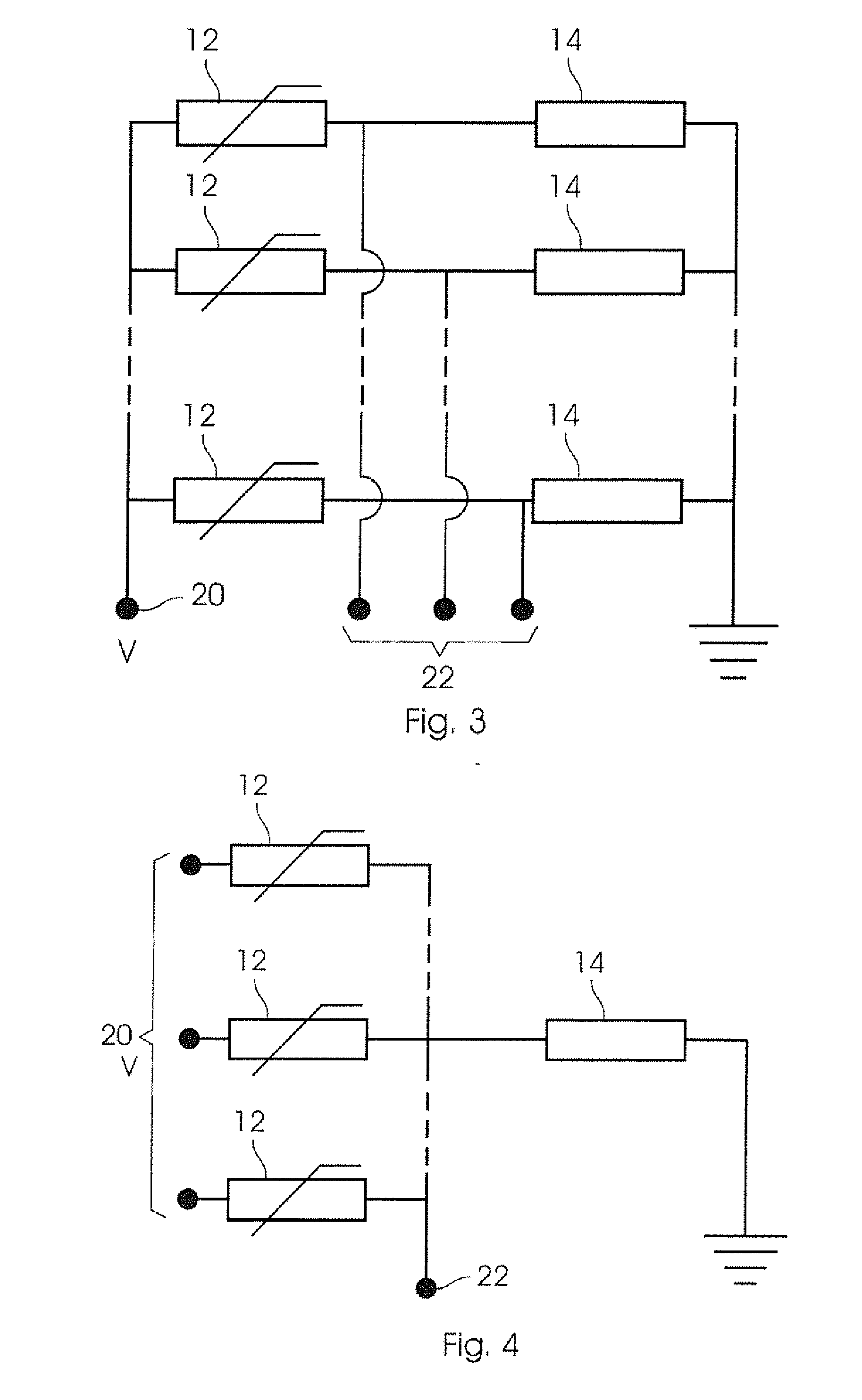Thermal Imaging Sensors
- Summary
- Abstract
- Description
- Claims
- Application Information
AI Technical Summary
Benefits of technology
Problems solved by technology
Method used
Image
Examples
Embodiment Construction
[0026]For purposes of explanation, the present invention will be described primarily with reference to temperature sensing devices. However, it will be understood that sensing devices for strain or pressure, or optical sensing devices, for example, are other examples of the invention.
[0027]The temperature sensing devices of the invention described herein are relatively large area thermal imaging sensors composed of a network of temperature dependent resistors, commonly known as thermistors, and temperature independent fixed resistors. Of particular relevance here are thermistors which have a negative temperature coefficient of resistance, commonly known as NTC thermistors, meaning that their electrical resistance decreases approximately exponentially with increasing temperature.
[0028]Thus, one aspect of the present invention provides a plurality of thermistors which are arranged in a temperature sensing array, where the sensors may be individually addressed or addressed as a row and...
PUM
 Login to view more
Login to view more Abstract
Description
Claims
Application Information
 Login to view more
Login to view more - R&D Engineer
- R&D Manager
- IP Professional
- Industry Leading Data Capabilities
- Powerful AI technology
- Patent DNA Extraction
Browse by: Latest US Patents, China's latest patents, Technical Efficacy Thesaurus, Application Domain, Technology Topic.
© 2024 PatSnap. All rights reserved.Legal|Privacy policy|Modern Slavery Act Transparency Statement|Sitemap



